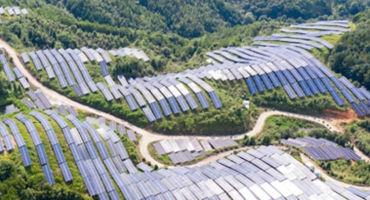A dynamic opportunity set — The scale of change and time required for the transition from fossil fuels to renewable energy sources means asset owners need to be prepared for the opportunity set to evolve. Companies likely to fit in a climate-aware portfolio will span a variety of sectors (e.g., industrials, technology, utilities, consumer staples) and the list will change over time, requiring a multisector opportunity set that can do the same.
A scientific perspective — Scientific research is, in our view, crucial for identifying investment materiality. It is also important to be comfortable with a greater range of model uncertainty when linking scientific and economic scenarios.
Diversification opportunities — Climate investments can cut across asset classes, including equities, fixed income, real estate, real assets, and private assets. We also think it’s useful to consider exposure to different types of climate strategies, such as those focused on decarbonization, climate solutions, physical versus transition risk, and mitigation versus adaptation/resilience.
Active versus passive implementation — Active strategies may offer advantages such as engagement with companies and issuers, the ability to evolve with a dynamic opportunity set, and a relatively more diverse style footprint. Passive approaches (such as those based on Paris-aligned benchmarks) can be more exclusionary and tend to carry a pro-growth, anti-value bias.
Manager evaluation — The evaluation process should be consistent with the manager’s focus and explicit objectives. Like asset owners, active managers will have a range of objectives and are unlikely to focus solely on climate risk and opportunity (their approach may, for example, depend on the extent to which they believe there is a return or alpha trade-off that comes with targeting a particular carbon impact). We think the manager evaluation process should lean on both historical and forward-looking metrics, with the latter likely being of greater importance but also subject to greater (model or realization) uncertainty.
Climate investing approaches can vary a great deal and it is essential for asset owners to understand how well each will align with their specific objectives. For more on our implementation research, read our full white paper, which considers the pros and cons of different strategies, takes a more in-depth look at the active/passive decision, and offers a checklist to help create a detailed “blueprint” to guide critical investment decisions.

















